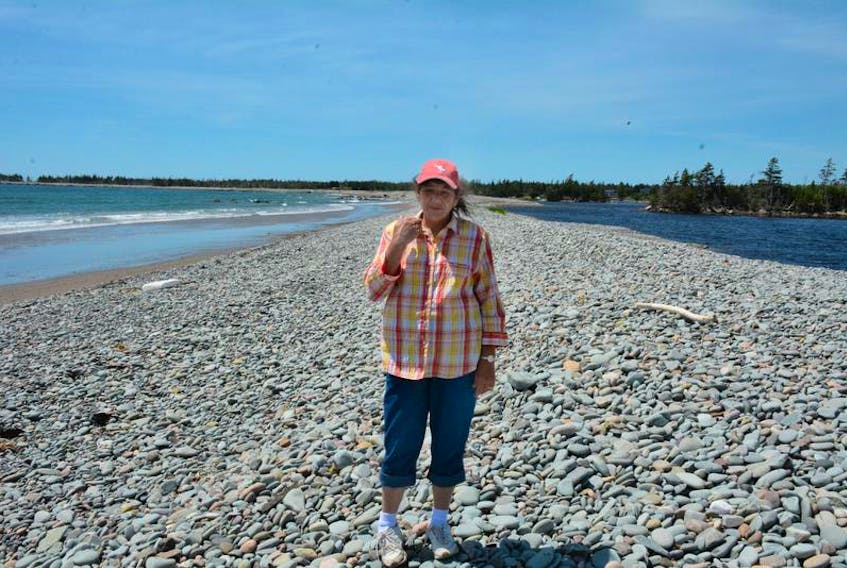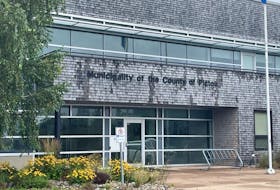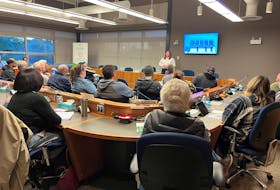Note: Sea levels are rising at a pace unparalleled in modern times and storms are becoming more intense as a result of global warming. This story is part of a weeklong series examining our rising oceans, the impact on our region and what government, scientists and others are doing to track change and mitigate damage.
Click here to read the series.
A government assistance program could be enough to persuade property owners to take necessary steps to mitigate the ravages of rising seas.
“We need a provincial strategy that says ‘here is the level of risk that we’ve assessed in this area, here are some of the things that can be done to mitigate risk,’ and in a dream scenario, if we had a rebate system where you give homeowners this information, they take some steps to mitigate their risk and perhaps we rebate them a little bit of money because we are avoiding disaster relief down the road,” said Nancy Anningson, the coastal adaption co-ordinator for the Ecology Action Centre.
Anningson is working closely with the Environment Department on coastal protection legislation that is expected to be brought before the House of Assembly this spring. That legislation will dictate appropriate buffer zones from the coast for developments, both commercial and residential. The legislation will cover only new developments and won’t mandate that any existing properties be changed.
“I’ve been working with a bunch of students and gathering information and thinking about the other side of that, the things that already exist and what do we do about those,” Anningson said. “What prompted me to do that research was the situation in Lower East Chezzetcook. The reality is that climate change is happening and we do have homes and assets along our coast that are at risk, some much more imminent than others. I’ve been gathering information about what the province could do as a comprehensive strategy for adaptation. We can’t keep dealing with these as one-off incidents. We have to accept the fact that our entire coastline is at some level of risk due to sea level rise, extreme weather events, storm surges and coastal erosion that is being accelerated.”
The good kind of setback
The Lower East Chezzetcook issue affects about 20 Long Lake neighbours who live behind the protection of a berm that shields the freshwater lake and their properties from storm surges. A perfect storm ripped through the berm last January and residents there were told by the province that their problem is a municipal one because Halifax Regional Municipality provides building permits in the area. The province said it wouldn’t be doing any work to bolster the berm. Hovever, many of the residents have lived there since before HRM existed.
Anningson said there are four broad categories that cover adaptation to sea level rise and climate change.
“The one that people like to talk about the least, understandably, is accepting that the property is at risk and abandoning the property. In some jurisdictions, government can buy people out but that’s not really a feasible strategy. It’s expensive.”
Another pre-emptive solution is retreat, she said.
“If you are fortunate enough that your property has space between you and the roadway, there are cases where people have lifted the structure and moved it closer to the roadway.”
Anningson said there are cases where property owners can elevate their structures, putting them on piles or stilts.
“People can dry-proof their basement and there are cases where structures have been built so that the lower part of the structure isn’t livable space, concrete or what have you, and the living goes on up above so when there is a flood, they are safe.”
Another mitigation move is to plan ahead, to have bylaws, setbacks and vertical allowances that avoid catastrophe by not allowing development in inappropriate areas.
Anningson said the information is out there but many people are unaware of the imminent climate change dangers and the ways to mitigate the risks.
“Councillors, municipal staff, property owners, developers need that information.
“I don’t think there are very many people who would intentionally put people in harm’s way. I think if people knew this, we would have much more responsible developments on our coast and lots of situations where people aren’t developing because they know it’s not safe.”
A government program, similar to the Efficiency Nova Scotia initiatives that give homeowners a monetary incentive to make their homes more energy efficient, would help people reach the decision to insulate their properties against rising seas.
“Coastal climate change and sea level rise, it’s terrifying,” Anningson said. “We know that it’s a threat and that people respond to it in a certain way. It’s hard to accept that you are at risk, that your assets that may be the centrepiece of your retirement plans, is at risk and may not have the value you wanted it to have. Once you have the information and you know that there are some options to adapt, to mitigate risk, I think that can be very empowering.”
People with the information and resources could be motivated to act within a certain time frame, she said.
“If you know that the cottage that you intend to leave to your grandchildren is going to be at risk before your grandchildren can get into it and there is something that you can do about it, you may be inclined to do so. A government assistance program as an incentive, that would be the ideal. At minimum, I think it is our responsibility to assess risk and make people aware of risk if they are contemplating buying coastal property or building something. We need to make that information available and make it easy for people to look up. Without that information, how can people make informed decisions.”









